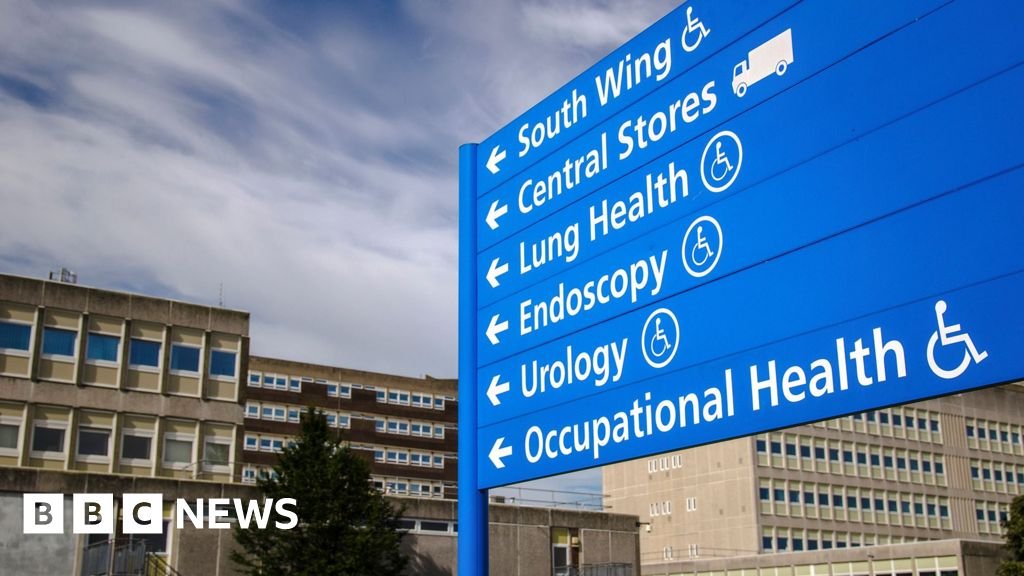Best and worst-performing NHS Trusts in England named

New league tables rating the performance of NHS trusts in England have been published for the first time, with specialist hospitals taking the top slots.
Number one is Moorfields Eye Hospital NHS Foundation Trust, followed by the Royal National Orthopaedic Hospital NHS Trust, and the Christie NHS Foundation Trust.
At the bottom is Queen Elizabeth Hospital, King’s Lynn, which has had major problems with its buildings because of structural weaknesses and the need for props to hold up ceilings.
Health Secretary Wes Streeting said the tables will identify where “urgent support is needed”.
“Patients know when local services aren’t up to scratch,” he said, “and they want to see an end to the postcode lottery – that’s what this government is doing.”
The public will be able to check out the performance of their local hospital, ambulance service or mental health trust.
Trusts in England are ranked every three months and placed in four categories – with the top performers given more power over how they spend their money and those lower down encouraged to learn from the best trusts and receive support from national officials.
A spokesperson for the Queen Elizabeth Hospital said: “Our patients deserve the highest standards of care, and we are sorry that in some of our performance areas… we have fallen short. Immediate steps are being taken to address the issues.”
But NHS Providers, representing trusts, said there were question marks over whether the league tables were accurately identifying the best performing organisations.
Chief executive Daniel Elkeles said: “For league tables to really drive up standards, tackle variations in care, and boost transparency, they need to measure the right things, be based on accurate, clear and objective data and avoid measuring what isn’t in individual providers’ gift to improve.
“Then they will drive improvement and boost performance. Anything less could lead to unintended consequences, potentially damaging patient confidence in local health services, demoralising hardworking NHS staff and skewing priorities.”
The Department of Health said that from next year the best performing trusts would have more freedom to develop services around local needs while those facing challenges would receive “enhanced support” with their bosses held accountable with their pay reduced because of poor performance.
The highest rated leaders will be offered bigger pay packets to try to turn around struggling trusts.
The metrics used to draw up the rankings include patient waiting times for planned treatment and A&E care and also the financial performance of the trust. It is possible that a hospital rated highly for clinical care will be marked down if they are running up a larger than expected deficit.
Thea Stein, chief executive of the Nuffield Trust think thank, said it was understandable that the government was focussed on winning back public trust but added a note of caution.
“There’s a risk that trusts will focus only on the measures that immediately boost their ranking, even if it’s not necessarily best for patients,” she said. “As finances have a particular sway on the rankings, this is of limited use for patients trying to choose the best hospital for their care.”
Chris McCann from Healthwatch England said any league table must inform and not confuse people.
“It will be essential that the new dashboard clearly communicates the information that is most important to patients and that it is as accessible as possible,” he said.
Discover more from News Hub
Subscribe to get the latest posts sent to your email.







